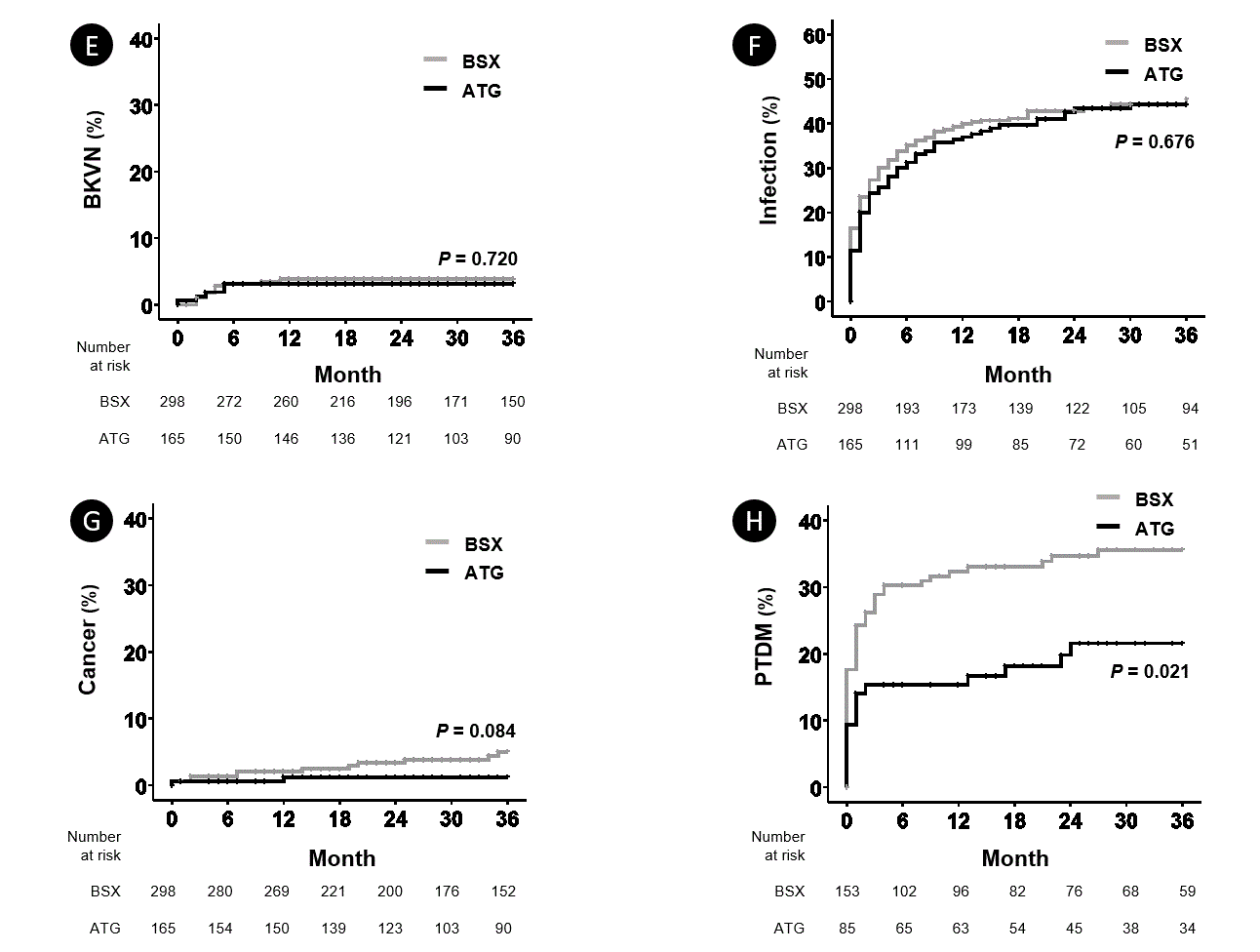Anti-thymocyte globulin versus basiliximab induction for kidney transplantation in elderly patients: matched analysis with Korean multicentric registry
Jun Young Lee1, Deok Gie Kim2.
1Nephology, Yonsei University Wonju College of Medicine, Wonju, Korea; 2Surgery, Severance Hospital , Seoul, Korea
The Korean organ transplantation registry study group.
Introduction: Basiliximab (BSX) and anti-thymocyte globulins (ATG), are two major immunosuppressive agents commonly used as induction therapy for kidney transplant (KT) recipients. The superiority of ATG over BSX has not been well established especially in elderly KT recipients with low immunological risk.
Method: A total of 847 elderly (≥60 years) low-risk KT patients in the Korean Organ Transplantation Registry were matched with 2:1 propensity scores and compared according to the ATG and BSX induction therapy. The primary outcome was patient and graft survival. The secondary outcome was biopsy-proven rejection, graft function, BK virus nephropathy, infection, cancer, new-onset diabetes mellitus after transplantation (NODAT), and delayed graft function.
Results: 165 patients in the ATG group were matched to 298 patients in the BSX group with an average age of 64.3 and 64.2 years, respectively. During 28.5 ± 10.4 months of mean follow up the cumulative probability of death censored graft failure at 3-year posttransplantation were 1.3% and 1.4% in ATG and BSX group without significant difference (p = 0.720). Cumulative probability of NODAT at 3-year posttransplantation was significantly higher in BSX group (35.6% versus 21.6%, p = 0.021). Median Tacrolimus trough level was significantly lower in 6 months after kidney transplantation in the ATG group (5.7 ng/mL versus 6.4 ng/mL, p = 0.001). There was no difference in other evaluated outcomes.


Conclusion: Compared to BSX, in elderly low-risk KT, ATG reduced Tacrolimus and steroid requirements without all-cause mortality, rejection, infection difference. Resulting in reduced NODAT incidence.

right-click to download
